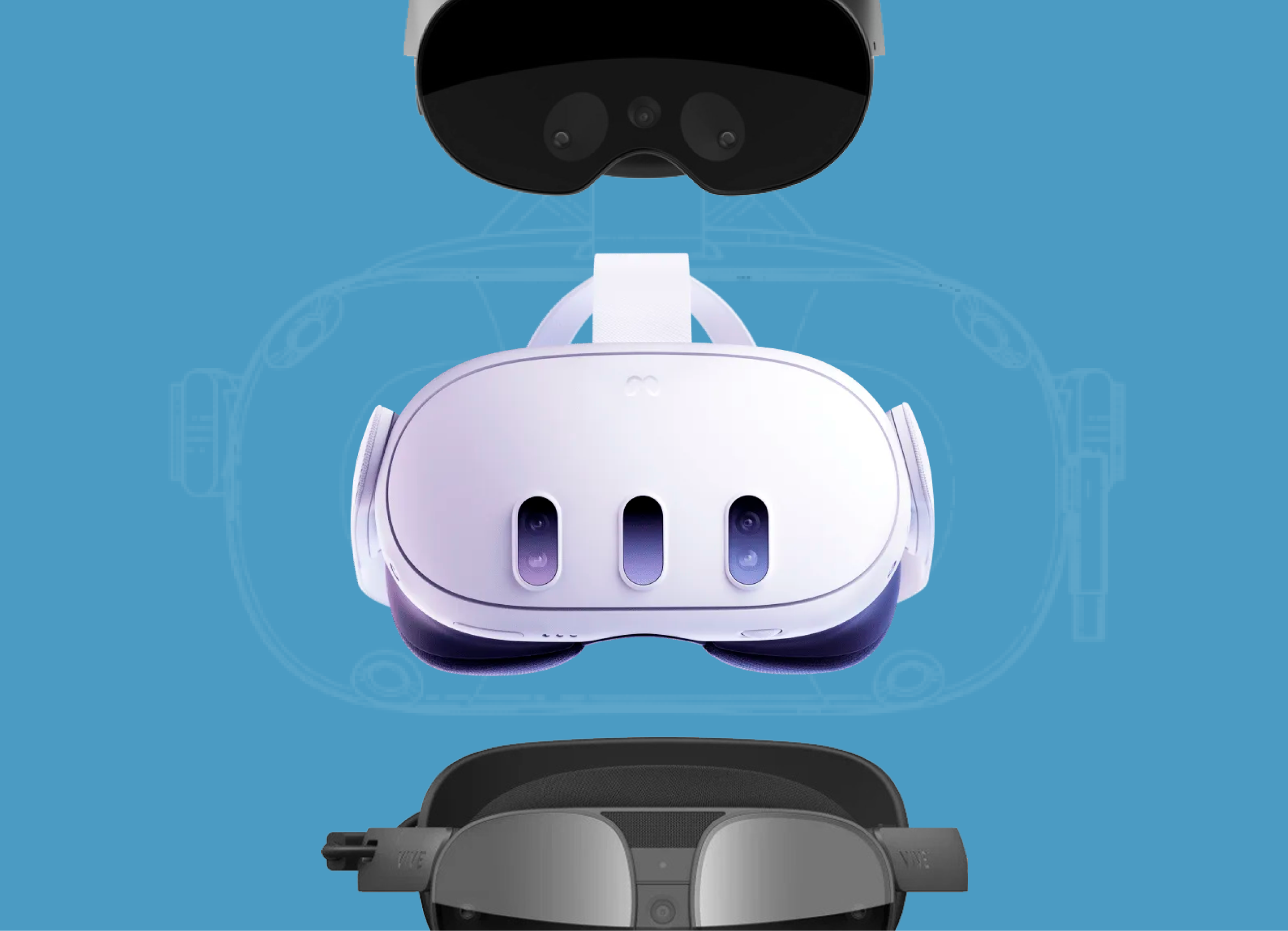
The year 2024 stands at the forefront of transformative developments in the realms of Augmented Reality and Virtual Reality, driven by two technological powerhouses: the Apple Vision Pro and Generative AI. These innovations, each with its distinct capabilities, contribute indispensably to the evolving landscape of digital experiences.
Apple Vision Pro: The New Standard
In the ever-evolving landscape of Virtual Reality, Apple is poised to make a groundbreaking entrance with its highly anticipated Apple Vision Pro headset. The imminent release of this device is generating considerable excitement, as it is expected to not only elevate the standards of VR but also redefine the way users engage with immersive digital experiences.
1. Setting a New Standard:
The Apple Vision Pro is not just another VR headset; it is anticipated to set a new standard in the market. Positioned to outperform competitors such as MagicLeap 2 and Hololens 2, Apple’s foray into VR is characterized by a commitment to excellence and a drive to surpass existing benchmarks. The Vision Pro aims to usher in a new era of VR technology, raising the bar for performance, features, and user experience.
2. Redefining Engagement with VR:
The impact of the Apple Vision Pro is not confined to technical specifications alone; it extends to the very essence of how users will engage with VR. Leveraging Apple’s design prowess, this headset aims to provide a more natural, intuitive, and immersive interaction with virtual environments. From the moment users put on the headset, they are likely to experience a seamless blend of technology and design that enhances the overall VR experience.
3. Riding the Wave of Innovation:
Apple’s entry into the VR landscape signifies a broader trend of innovation within the technology industry. As the Vision Pro prepares to make its debut, it symbolizes the culmination of years of research, development, and a dedication to reimagining how we interact with digital content. The headset is poised to ride the wave of technological innovation, bringing forth a product that not only meets but exceeds user expectations.
With a commitment to setting new standards, leveraging design expertise, and offering superior features and performance, this highly anticipated headset is poised to leave an indelible mark on the VR landscape.
Generative AI
As we step into 2024, the horizon for Generative AI appears even more promising, building on the foundations laid in 2023. This transformative technology, capable of creating content autonomously, is poised to revolutionize various facets of our digital experiences.
1. Creating Immersive Digital Realities
Generative AI’s prowess extends beyond its initial applications. In 2024, we anticipate an accelerated ability to create entire digital worlds and environments with unprecedented realism. From sprawling landscapes to intricate cityscapes, Generative AI is set to become a cornerstone in the construction of immersive digital realms.
2. Realistic Character Generation
One of the standout features of Generative AI lies in its capacity to craft lifelike characters. In the coming year, we can expect significant advancements in generating realistic avatars, NPCs (Non-Player Characters), and entities within virtual spaces. This evolution will contribute to more engaging and authentic virtual experiences, blurring the lines between the real and the artificial.
3. Efficiency in 3D Environment Creation
Mark Zuckerberg’s vision of expediting the creation of 3D environments through Generative AI reflects a broader trend. In 2024, the technology is likely to streamline and enhance the efficiency of 3D design processes. This not only reduces the time and resources required for content creation but also empowers creators to bring their visions to life more rapidly.
4. Customizable and Diverse Content
Generative AI’s adaptability will play a pivotal role in diversifying content creation. Expect a surge in customizable elements within digital environments, allowing for a more personalized and dynamic user experience. This could range from dynamically generated landscapes in virtual worlds to tailored character appearances, enriching the variety and uniqueness of digital spaces.
5. Collaboration with Other Technologies
In 2024, Generative AI is likely to intertwine with other emerging technologies, amplifying its impact. Collaborations with augmented reality (AR) and virtual reality (VR) devices may lead to the seamless integration of AI-generated content into our physical surroundings, further blurring the boundaries between the virtual and the real.
6. Ethical Considerations and Safeguards
As Generative AI becomes more ingrained in content creation, ethical considerations will come to the forefront. The year 2024 will see heightened discussions about responsible AI use, potential biases in generated content, and the need for robust safeguards. Striking a balance between innovation and ethical deployment will be imperative for the sustainable development of Generative AI.
As the year unfolds, expect Generative AI to not only contribute to the evolution of virtual realities but also spark crucial conversations about the ethical dimensions of AI-driven content creation.
The Crucial Synergy: Transforming Augmented Experiences
The confluence of the Apple Vision Pro and Generative AI in 2024 marks a pivotal moment in the evolution of AR and VR technologies. Apple’s commitment to setting new standards and Generative AI’s capacity to create immersive digital realities form a synergy that promises to redefine how we live, work, and interact in the digital age. While the Vision Pro enhances the hardware and user experience, Generative AI contributes to the content creation process, ensuring a more diverse and personalized digital landscape.
As the immersive experiences of 2024 unfold, the Apple Vision Pro and Generative AI stand as testaments to the industry’s commitment to innovation, pushing the boundaries of what is possible in the digital realm. Together, they create a narrative of transformative advancements that will shape the way we perceive and engage with digital realities in the years to come.



